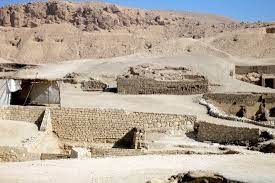
Exploring the Enigmatic Tombs of the Nobles In Luxor
The ancient world holds numerous secrets, and one of its most intriguing mysteries lies within the tombs of the nobles. These burial sites have captivated historians, archaeologists, and curious minds for centuries. An ancient Egyptian tomb of the Nobles refers to the tombs of workers, foremen, priests, soldiers, officials, viziers, princes, etc. In this blog post, we embark on a journey through time to uncover the secrets and significance of the Tombs of the Nobles.
1-The History Unveiled
The Tombs of the Nobles, also known as the Tombs of the Elite, were the final resting places of influential individuals in ancient civilizations. From the grandeur of Egyptian pharaohs to the nobles of Mesoamerican societies, these tombs offer unparalleled insights into the lives and beliefs of these distinguished figures. It was the ancient Egyptians who built the most elaborate tombs in ancient history, especially those for their kings. The typical Egyptian tomb was mastaba tombs that were divided into ceremonial chamber and burial chamber. In the large room, ceremonies were always held honoring the dead spirits, while in the smaller room, there was a statue for the dead man so that his spirit could witness the ceremonies as well.
2- Architectural Marvels
Step inside these tombs, and you’ll be awestruck by the architectural marvels that await. Each tomb showcases a unique blend of artistry, symbolism, and cultural influences. Intricate carvings, vivid murals, and elaborate burial rituals provide a glimpse into the opulence and spiritual beliefs of the nobles.
3- Symbolism and Rituals
The Tombs of the Nobles were not merely resting places; they were sacred spaces filled with deep symbolism and rituals. From intricate hieroglyphics that narrate stories of the afterlife to carefully curated burial offerings that ensured a prosperous journey into eternity, each detail was meticulously crafted to honor and protect the noble’s spirit.
4-Unveiling Ancient Rituals
Within the depths of these tombs, ancient rituals and burial customs come to life. Elaborate burial chambers, filled with treasures and offerings, reveal the reverence and belief in the afterlife held by the nobility. The hieroglyphics and inscriptions provide clues about the roles and responsibilities of the deceased, shedding light on their societal standing and achievements.
5-Cultural Significance and Heritage
Beyond their historical importance, the tombs of the nobles hold great cultural significance. They represent the collective memory and heritage of civilizations long gone, reminding us of our shared human history. These sites have become invaluable educational resources, enabling us to learn about the customs, traditions, and ideologies that shaped ancient societies. Preserving and studying these tombs is crucial in safeguarding our cultural heritage for future generations.
6-Rituals and Burial Customs
Unearth the secrets of burial rituals and customs as we unravel the mysteries within the tombs of the nobles. From elaborate funeral processions to the placement of treasured possessions, these burial sites offer a glimpse into the belief systems and traditions of the past. Discover how these rituals played a vital role in ensuring the nobles’ safe passage into the afterlife.
The Tombs of the Nobles offer a captivating glimpse into the past, unraveling the mysteries of ancient civilizations. Through their history, architectural marvels, symbolism, and ongoing discoveries, these tombs provide a window into the lives and beliefs of the nobles who once walked the Earth. Let us continue to explore, preserve, and learn from these enigmatic resting places, ensuring that their stories endure for generations to come.

